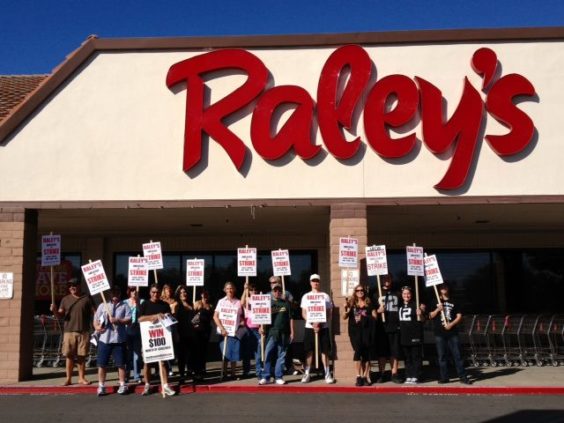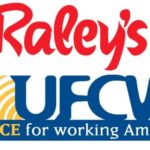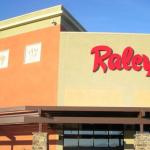
Workers are back on the job at Raley’s supermarkets. But for how long? The nine-day strike that ended today has all sides breathing a sigh of relief – but it’s also raising questions about how long a unionized, locally-owned, family-run chain can survive in a Walmart world.
Thousands of employees of Sacramento-based Raley’s, and Raley’s-owned Nob Hill, walked out earlier this month after talks on a new contract broke down, in a dispute over wages and health care benefits (read: “Supermarket Strike Divides Shoppers”). A marathon negotiating session that ended early this morning brought word of a deal. Details were not disclosed, but union leaders said the deal does preserve the union health care plan, one of their key demands.
As picketers put down their signs and headed back to work, both sides applauded the deal. “This is an extraordinary accomplishment,” union leader Jacques Loveall said. “We’ve been able to protect our members in a very, very challenging environment.” “This is very exciting,” Raley’s president Mike Teel said in a statement, “because this contract provides us with the cost savings we need to fund our vision and the initiatives to make us more competitive in the 21st Century.”
Even before the strike, though, some retail analysts were wondering whether Raley’s would be able to withstand its growing competition. And some were skeptical that a new loyalty program introduced over the summer would help (read: “Can Loyalty Save Supermarkets?”). With lower-cost, non-union competitors moving in, Raley’s might be in for “a slow, painful decline,” one analyst told the Sacramento Business Journal back in June. The only thing that could save it, another analyst remarked, was to reduce one of the few costs it was in a position to negotiate – the cost of labor. “I think Raley’s is in a very tenuous situation,” grocery consultant Wendell Smith told the Sacramento Business Journal last week. Its only choices, he said, were to reduce its costs – or raise its prices.
Without knowing details of the agreement, it’s unclear whether the “cost savings” Raley’s cites will indeed be enough to make it more competitive. First, though, it has to dig itself out of a hole. While the strike was a short one, Smith estimated that Raley’s was likely losing $3 to $4 million a day. Plus, it was extending generous offers to shoppers who crossed picket lines during the strike, giving away nearly a dozen different products – from produce to potato chips – for free (read: “Strike-Hit Supermarket Lures Shoppers With Goodies”). And a Raley’s spokesman tells Coupons in the News that “we will continue similar promotions in the coming days and weeks to thank our customers for their support.” Sure enough, as soon as the strike ended, Raley’s announced a new coupon offer, for up to 10% off a future purchase.
In time, though, the special offers – and memories of the strike – will fade away. Then what? “I think Raley’s knows their conventional store format is not really sustainable long-term,” an analyst tells the Sacramento Business Journal. Raley’s says it does have “a vision” to adapt to the modern retail landscape, though it’s not disclosing details just yet. The big question is whether a “vision” will be enough for a unionized store with industry-leading wages to effectively compete at all. Raley’s has noted that many of its competitors are non-union, and have lower operating costs. In time, the Sacramento Business Journal quotes one analyst ominously, “unionized grocers will probably just fade away,” unable to survive against non-union competitors.
For now, as the strike ends, both sides are claiming victory. But ultimately, winning the battle may not be as important as winning the war that they’ll have to face together.
Image source: YourBreadAndButter.com Facebook page















